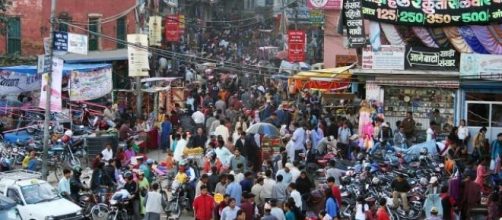A devastating earthquake with a magnitude of 7.8 on the Richter Scale hit Nepal on Saturday at 11.56 pm local time, according to US Geological Survey. The epicentre was located to be somewhere 50 miles from the capital, Kathmandu.
The US Geological Survey named the area to be one of the most seismologically hazardous areas on Earth. It is the area where the India plate collides with the Eurasia plate, creating the Himalayas.
The government has called a state of emergency with regards to 29 districts and has requested for humanitarian aid from the international community.
Shocks were felt all the way up to India, Tibet, Bangladesh and Mount Everest. There have been recorded at least 34 dead in India, 12 in Tibet and 2 in Bangladesh. The earthquake also triggered a series of avalanches on Mount Everest, where a number of mountaineers have been reported missing with 18 dead.
The depth of the earthquake, the hypocentre is approximated at 9.3 miles, which is shallow but the effects are overwhelmingly catastrophic.
The situation in Nepal is chaotic, with the people terrified and frantic. The Home Affairs Ministry has reported a death toll of 1457, but numbers are expected to rise as the rescue operations are still in their early stages and the devastation is extensive.
Kathmandu houses a population of a million people. The earthquake has left rubble coating the streets, houses, buildings in ruins and temples levelled. Historic buildings that were listed as UNESCO heritage sites have also collapsed or have been severely damaged. Destruction is widespread, and telephone lines are down.
There are an estimated of 6.6 million people affected by the natural disaster. A total of 15 aftershocks have been counted, with one that measures up to 6.6 on the Richter Scale.
The greatest concern for aid agencies regarding the situation in Nepal is the lack of shelter, running water, electricity and the dropping nightfall temperatures.
Hospitals are overwhelmed with casualties leading to patients being treated outside on the streets, as more bodies are recovered from under the rubble.
Many residents face the immediate problem of finding shelter for the night as temperatures fall drastically low.
The whole world has been rocked by the massive destruction taking place in the earthquake that hit Nepal. Countries have already dispatched aid and medical teams, with India sending 39 medical personnel and 3.5 metric tonnes of aid within a few hours of the natural disaster, but given the lack of communication and poor access in affected areas, there are fears for the lives of many across the region.
This is being recorded as the worst earthquake to hit Nepal after one in 1934, which nearly destroyed Kathmandu.

